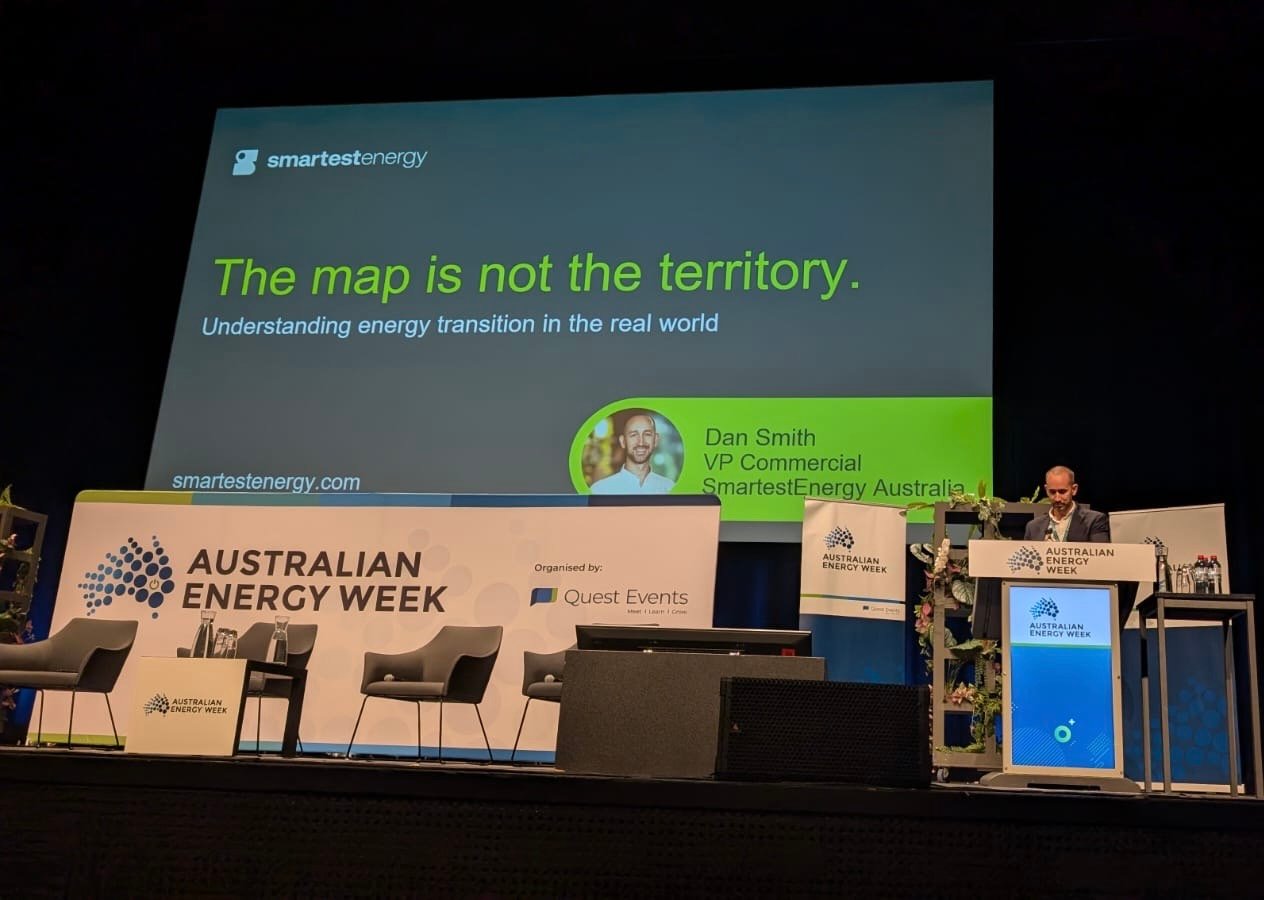AEW 2025: The next decade demands bold collaboration as we journey to net zero
From grid orchestration to data centre demand, from subsidies to social license, Australian Energy Week 2025 made one thing clear: energy transformation isn’t about one breakthrough to achieve net zero. It’s about stitching together many initiatives fast, fairly and at scale. Below are our team’s AEW takeaways from keynotes, panel discussions and ministerial addresses, viewed through the lens of what this means for businesses navigating their own decarbonisation pathways.

The global energy transition just got messier and more urgent
Mekala Krishnan (McKinsey & Company) called the energy system “a massive, complex physical machine optimised over centuries.” It supplies more than energy: it powers chemical processes, transportation and industry. Yet 85% of emissions still come from it.
She highlighted:
- Two-thirds of all energy is wasted: fixing that is as important as generating more
- Data centres are the new ‘elephant on the grid’: their rapid demand growth is reshaping baseload needs and investment logic
- Seven interlinked domains (power, mobility, industry, buildings, raw materials, hydrogen and other energy carriers, carbon and energy reduction) all need to be transformed together
The energy transition is capital-intensive, multi-speed and riddled with performance gaps. Many of the hardest challenges for Australia fall into McKinsey’s “Level 3” category, problems that can’t be solved with today’s tech alone. They require innovation to solve.
What’s Australia’s edge? AI, prosumers and competitive grit
At the panel on breakthrough technologies and innovations paving the way to a net zero energy system, the mood was pragmatic but forward-looking.
Angela Riley, Head of Sales at SmartestEnergy Australia, captured the sentiment well:
Decarbonisation is a team sport. We need increased transparency, orchestration of distributed assets at scale, flexible solutions and the willingness to share data across the supply chain to support better decision-making and more efficient outcomes for consumers.”
Key takeaways included:
- AI is already supporting prosumers to optimise behind-the-meter energy use
- Demand-side flexibility is finally scaling, thanks to smart heat pumps, batteries and real-time market signals
- Data-sharing between retailers, networks and aggregators is still clunky, but unlocking it is key to smarter grid orchestration
- Don’t let perfect be the enemy of good: friction-free, consumer-centric systems must come before ideal architectures
SmartestEnergy has long advocated for energy partnerships over prescriptive solutions. As more businesses take charge of their energy strategies, this approach (flexible, informed and people-powered) is only gaining traction.
Ministerial moves: speed, scale and shifting market rules
Chris Bowen, Minister for Climate Change and Energy, conveyed stability and ambition stemming from re-election of the Labor Government, which is helpful for building investor confidence and driving large scale initiatives forward in the coming years. Notably, he made a number of announcements, which included:
- The Capacity Investment Scheme (CIS) tender process will be shortened (from a two to a one-stage process), aiming to reduce the CIS tender timeline for new renewable energy generation and storage projects from nine to six months
- From 1 July 2025, the federal government will subsidise 30% of battery installation costs for homes and small businesses
- A regulatory review of how retail Default Market Offers (DMO) are calculated sparked mixed reactions, with some retailers raising concerns over the potential longer-term impacts on competition
While policy clarity is welcome, execution remains critical. Australia’s ability to deliver cost-effective, grid-integrated, reliable clean energy will determine whether the 2035 emissions reduction target, due for announcement in September 2025, is truly “ambitious but achievable.”
Battery ease, not just battery squeeze
EnergyAustralia’s Mark Collette made a sharp point: “Can Australia ever get back to A$50 energy?”
The answer, in part, lies in flattening the peaks. This reduces the need for costly new transmission and avoids the trap of investing in “just-in-case” infrastructure.
At SmartestEnergy, we’re seeing C&I businesses already stepping into this space: blending onsite generation, flexible demand and virtual PPA models that give them control without complexity.
What’s next: orchestration, openness and getting on with it
Craig Scroggie, CEO of NextDC, reminded us that AI is not the enemy; it’s a catalyst. Just like the energy transition, AI will replace some traditional roles but create higher-paid ones just as quickly.
His call to action applies to energy too: “Don’t be afraid of the power of AI. Lean in, upskill and build something better.”
AEW 2025 showed that the path to net zero is filled with trade-offs, uncertainty, and real-world friction, but also collaboration, innovation and practical momentum.
For Australian businesses, that means:
- Getting energy-fit for an electrified, AI-powered economy
- Partnering on flexibility and data, not just electrons
- Converging roadmaps to navigate the complexity of decarbonisation, and turning ambition into reality, as Dan Smith, VP Commercial of SmartestEnergy Australia, reminded us: “The map is not the territory”.
The next 10 years will define our energy legacy. Let’s make it a smart one.